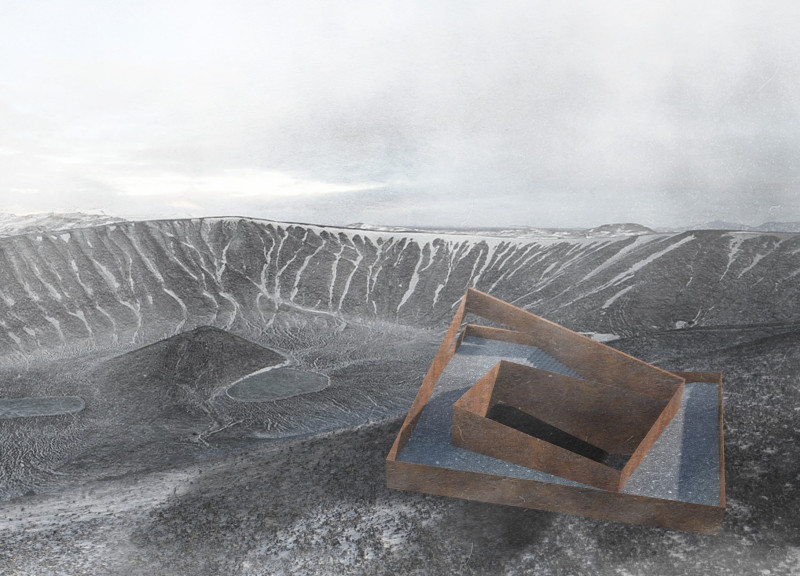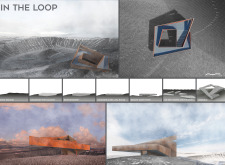5 key facts about this project
The main structure consists of interlocking volumes that respond to the surrounding slopes and contours. This configuration results in a dynamic spatial organization that not only facilitates movement but also enhances the user's experience as they navigate the landscape. The building's layout promotes accessibility, with layered platforms that integrate seamlessly with the topography.
Material choices play an essential role in defining the architecture. The use of concrete mixed with local lava rocks establishes a strong connection to the site. This selection is not only practical, ensuring durability, but it also reflects the natural environment and minimizes transportation emissions. Additional elements such as rust-patina finishes and glass components further connect the structure to its surroundings. While the concrete provides a robust framework, the glass allows for ample natural light, creating a visual link between interior spaces and the external landscape.
The unique design approach of "In the Loop" lies in its ability to fuse multi-faceted geometric forms with a strong environmental consideration. It avoids conventional rigid structures by embracing organic shapes that mimic the land’s natural features. The project prioritizes a flow that directs occupants through various experiences while maintaining an awareness of their surroundings. This design language enhances user engagement, stimulating a connection to both the architecture and the landscape.
Attention to construction processes is evident, with methods that respect the terrain. The initial excavation prepares the site while the on-site curing of materials enhances strength and longevity. The architectural plans reveal a well-thought-out strategy, ensuring that the building adapts to the environment rather than imposing on it.
For a comprehensive understanding of the project and its architectural ideas, readers are encouraged to explore the architectural plans, sections, and designs. Detailed insights into the project's technical aspects provide a deeper appreciation for the intricate relationship between architecture and its context.























